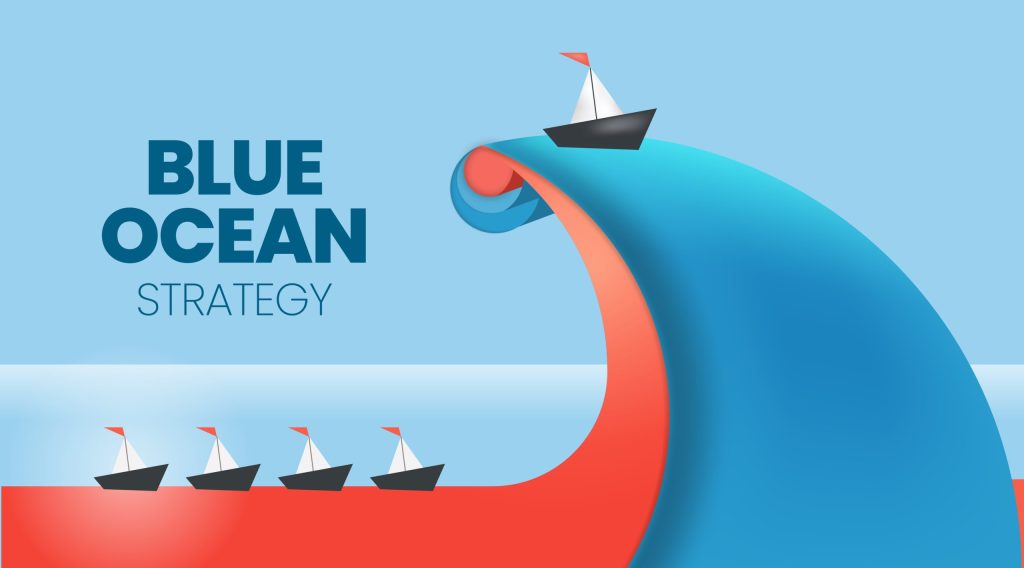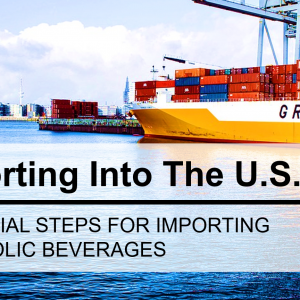To succeed in the crowded beverage market, you must find an untapped niche with lots of growth potential. How do you go about finding one of these hidden gems? According to a popular innovation strategy, the answer lies in a creative approach that moves your beverage concept away from cramped waters bloodied by competition and into the blue ocean.
What is Blue Ocean Strategy?
The name “blue ocean strategy” comes from the book Blue Ocean Strategy: How to Create Uncontested Market Space and Make Competition Irrelevant by W. Chan Kim and Renée Mauborgne. The main idea is to find opportunities with high product differentiation and low cost. Put another way; a blue ocean innovation strategy is about going after a new or uncontested market free of competitors.
| BLUE OCEAN | RED OCEAN |
|---|---|
| Create New Market | Compete in Existing Market |
| Make Competitors Irrelevant | Beat Competitors |
| Create & Capture New Demand | Target Existing (Known) Demand |
| Pursue Differentiation AND Low Cost | Pursue Differentiation OR Low Cost |
A blue ocean beverage strategy identifies, targets, and captures untapped opportunities in the market, leveraging everything from product development to marketing, sales, and operations. Energy shot maker, 5-hour Energy, created a blue ocean of untapped market potential by placing their products in the countertop display at checkout instead of in the cooler doors and grocery aisles where they would be in direct competition with giants like Monster and Rock Star.
A “Blue Ocean” beverage company goes beyond analyzing competitive forces within an existing industry – it develops new strategic value that makes the competition irrelevant. Blue Ocean business ideas start with mapping your industry’s value curve.
Mapping Your Value Curve
A value curve is a tool that helps you map where your strategy stands relative to your competitors by showing key competitors, the factors they compete over, and how each company values each of those factors.
Comparing your value curve to the market helps you see which competitive factors might be left on the table as possible new points of differentiation. But how do you build a new value curve with your product or business? Constructing your Blue Ocean Strategy starts with what Kim and Mauborgne call The Four Actions Framework.
Give it a try: Map Your Beverage Company’s Value Curve
Step 1: Draw an x- and y-axis
Step 2: On the x-axis, list the competitive factors in your industry (price, availability, nutritional content, advertising, etc.)
Step 3: On the y-axis, rate how you and your competitors perform for each factor you identified. Either high vs low or using a number scale such as 1-5 with 5 being the best.
Step 4: Connect the data points to reveal the value curves.
Step 5: Look at the graph to identify gaps in the market that you could exploit.
Watch this video to learn more about Value Curves and Strategy Canvas
Four Actions Framework
The Four Actions Framework is a tool that helps you identify and pursue opportunities for creating uncontested market space. It consists of asking four questions:
- Which factors of the current competition should be eliminated?
- Which factors should be increased well above the industry’s standard?
- Which factors should be reduced well below the industry’s standard?
- Which factors should be created that the industry has never offered before?
Once you’ve gone through the Four Actions Framework, you should have a good idea of where there might be opportunities for you to create uncontested market space.
Looking Ahead and Taking the Plunge
Finding blue oceans in fast-moving markets is challenging. With the developments in innovation and technology and the seemingly insatiable appetite for new products, it’s difficult to predict all of the value beverage creators will bring to the market over the next 10 to 20 years.
What opportunities are waiting in your beverage brand’s blue ocean?


